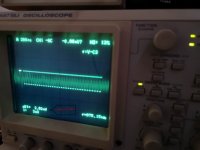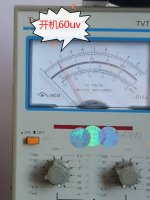The limit of human hearing is a SPL of 0dB by definition, typical speakers are say 90dB at 1 metre with 1 watt. Ear close to the speaker might be 0.05m distance, so 1 watt would be 90+26dB = 116dB (don't try this with 1 watt!!!),
so limit of hearing is -116dBW, which for 8 ohm speakers is -107dbV.
With an amp gain of 22 (= 27dB), this means the amp input noise that would be only just perceptible with your ear 5cm from the speaker is -107 - 27 = -134dBV,
or 0.2µVrms, or in terms of voltage noise density that's 1.4nV/√Hz referred to the amp input.
A good amp might be able to get that low, but its unlikely. Also with an open-circuit input (assuming 47k load resistor) will have a Johnson noise from the resistor of 28nV/√Hz, or 3.9µVrms, leading to 86µVrms at the speaker, which is -90dBW.
Thus 1 metre from the speaker the SPL level is 0dB, and 5cm from the speaker its 26dB (clearly audible). All assuming the amp isn't adding even more noise.
In short its rare to find an amp that doesn't have audible hiss with your ear up against the speaker, and open circuit inputs with standard 47k input impedance will always have objectionable levels of hiss for a quiet environment, but then again you'd never do that as the preamp will be plugged in!
The time I do hear this is with modern small music players and phones which power-down their DACs after playing, leading to a sudden noise/hiss/hum event after what was a noise-free playback.
I want to measure the RMS value of the output amplifier noise voltage. Can I use a millivolt meter? How to measure accurately?
60 µV would be fairly decent within 20 kHz, let alone 1 MHz - it is likely to be far less than that within the audible range. I wouldn't be surprised to see <20 µV or even <15 µV there. (Do you have a decent soundcard input available?) A value like that would certainly be within my expectations for the given circuit.
The scope may be showing some sort of ground loop noise. Is the amplifier
a) an IEC Class I device (mains earthed), or equipped with another kind of explicit protective earth connection (maybe a parallel RC)?
or
b) an IEC Class II device (floating), and if so, is its mains transformer equipped with a shield winding (that is actually being used) or not?
Stupid question - you do actually have mains protective earth in the lab, do you? This 75 kHz "stuff" could also be coming from the scope's very own power supply...
The scope may be showing some sort of ground loop noise. Is the amplifier
a) an IEC Class I device (mains earthed), or equipped with another kind of explicit protective earth connection (maybe a parallel RC)?
or
b) an IEC Class II device (floating), and if so, is its mains transformer equipped with a shield winding (that is actually being used) or not?
Stupid question - you do actually have mains protective earth in the lab, do you? This 75 kHz "stuff" could also be coming from the scope's very own power supply...
60 µV would be fairly decent within 20 kHz, let alone 1 MHz - it is likely to be far less than that within the audible range. I wouldn't be surprised to see <20 µV or even <15 µV there. (Do you have a decent soundcard input available?) A value like that would certainly be within my expectations for the given circuit.
The scope may be showing some sort of ground loop noise. Is the amplifier
a) an IEC Class I device (mains earthed), or equipped with another kind of explicit protective earth connection (maybe a parallel RC)?
or
b) an IEC Class II device (floating), and if so, is its mains transformer equipped with a shield winding (that is actually being used) or not?
Stupid question - you do actually have mains protective earth in the lab, do you? This 75 kHz "stuff" could also be coming from the scope's very own power supply...
Because the peak-to-peak value is only 2MV, the frequency display of the oscilloscope is unreliable, and the frequency will keep jumping. Because the oscilloscope time has been adjusted to the minimum, the interference frequency is about 20MHZ. After the power amplifier is powered off, this waveform is also displayed. I do n’t know what the interference is.
Last edited:
- Status
- This old topic is closed. If you want to reopen this topic, contact a moderator using the "Report Post" button.

